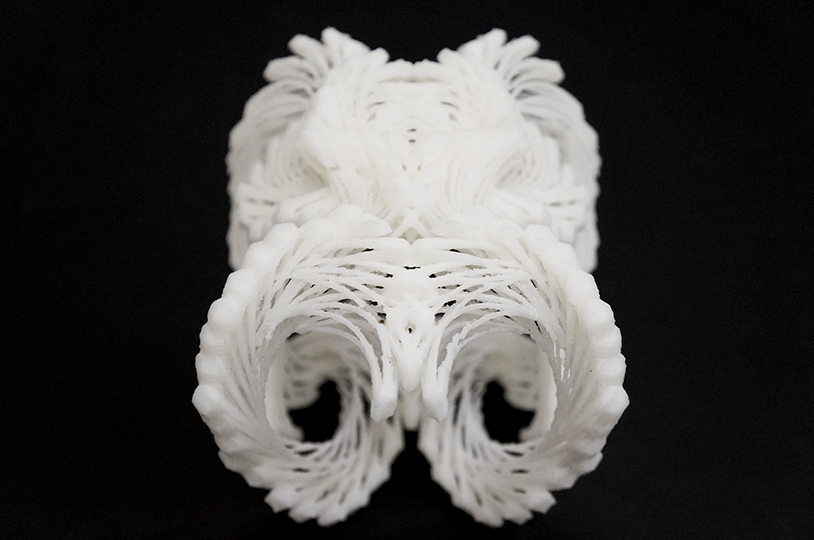Looking Outwards 2 : Processing
ADMIRATION Chronomorphologic Modeling by Madeline Gannon
Madeline Gannon, a graduate student in the CMU School of Architecture, uses the natural fluidity of motion to create 3D printed wearables. Within the scope of a Processing-run 3D environment, Gannon’s program allows the user, via Kinect (wholly unnecessary in my opinion), to drag a squid-like entity through space. As the squid’s tentacles and tendrils twist and whip through space, a periodic snapshot is taken of the squid’s location, and added to a mesh file, compiling its motion over time into a static physical form, which is then 3D printed.
Apart from its inherent beauty, I admire that Gannon’s structures draw their intricate patterns and organic composition from iteration and accumulation, two very powerful tools of digital expression.

SURPRISE unnamed soundsculpture by Daniel Franke and Laura Keil
Admittedly, I am a sucker for particle effects, so this video had me hooked from the get go. The particle effects, however, are only the vehicle through which Daniel Franke and Laura Keil convey a stunningly beautiful mix of emergent imagery and contemporary dance:
Recognizing form within a previously chaotic system, especially human form, is an immensely enjoyable experience. I love artwork which explores the basic human need to extract familiarity from confusion. The effectiveness with which unnamed soundsculpture explores this concept surprised me greatly.

MISSED OPPORTUNITY Mycelium by Ryan Alexander
Mycelium simulates fungal growth over an image, where the brightness of each pixel represents a food supply that the fungus can use to grow. While a very promising and creative idea by itself, Ryan Alexander could have taken this in so many directions, and yet left it decidedly bland:
No sound, black and white, TWO DIMENSIONAL. When dealing with simulated organic growth, three dimensions is almost guaranteed to provide a more interesting result, as would certainly be the case with Mycelium. Also, the fungus mimics the pixel values of the image it is eating, thereby reducing itself, for all intents and purposes, to a simple image filter. With a few changes to the display function of the fungus, and perhaps a foray into the third dimension, Mycelium could be much more engaging.